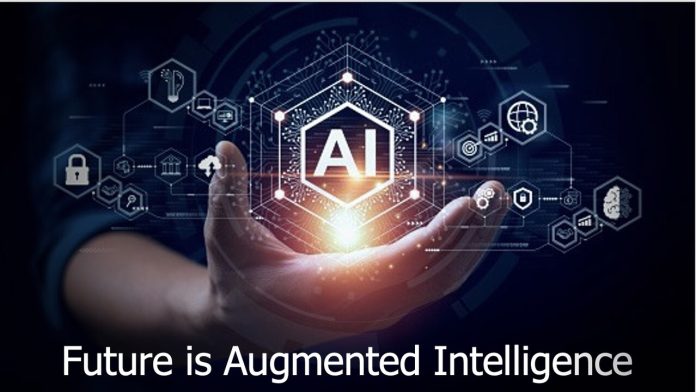Augmented Intelligence (AI), also known as intelligence amplification (IA), refers to the use of technology to enhance human cognitive functions. Unlike artificial intelligence, which aims to replicate or replace human intelligence, augmented intelligence focuses on complementing human abilities, making them more efficient and effective. This technology leverages the strengths of both humans and machines to achieve better outcomes in various fields. Here’s an in-depth look at augmented intelligence technology, its applications, benefits, and future potential.
What is Augmented Intelligence?
Augmented intelligence involves the integration of advanced technologies like machine learning, data analytics, and natural language processing with human intelligence. The goal is to create systems that assist and enhance human decision-making, problem-solving, and creativity. By combining the computational power of machines with the contextual understanding and experience of humans, augmented intelligence aims to produce superior results.
Key Components of Augmented Intelligence
- Data Analytics:
- Utilizes vast amounts of data to identify patterns, trends, and insights.
- Helps humans make informed decisions based on data-driven evidence.
- Machine Learning:
- Enables systems to learn from data and improve over time.
- Assists humans in predicting outcomes and optimizing processes.
- Natural Language Processing (NLP):
- Allows machines to understand and respond to human language.
- Facilitates seamless interaction between humans and machines.
- Human-Computer Interaction (HCI):
- Focuses on designing interfaces that enhance human-machine collaboration.
- Ensures that technology is user-friendly and accessible.
Applications of Augmented Intelligence
- Healthcare:
- Diagnostics: AI algorithms analyze medical images and data to assist doctors in diagnosing diseases more accurately and quickly.
- Personalized Medicine: Augmented intelligence helps tailor treatments to individual patients based on their genetic and medical histories.
- Predictive Analytics: Anticipates patient needs and potential health risks, enabling proactive care.
- Finance:
- Risk Management: AI models evaluate financial risks, helping analysts make better investment decisions.
- Fraud Detection: Identifies suspicious transactions and patterns that may indicate fraud.
- Customer Service: Chatbots and virtual assistants provide real-time support and advice to customers.
- Retail:
- Personalized Recommendations: Augmented intelligence analyzes customer behavior to suggest products and services tailored to individual preferences.
- Inventory Management: Optimizes stock levels and supply chains to reduce costs and improve efficiency.
- Customer Insights: Provides deeper understanding of customer needs and trends through data analysis.
- Manufacturing:
- Predictive Maintenance: Predicts equipment failures before they occur, reducing downtime and maintenance costs.
- Quality Control: Enhances inspection processes by identifying defects and inconsistencies in products.
- Process Optimization: Streamlines manufacturing processes for greater efficiency and productivity.
- Education:
- Adaptive Learning: Customizes educational content to meet the needs of individual students.
- Virtual Tutors: Provides personalized support and feedback to learners.
- Data-Driven Insights: Helps educators identify areas where students need more help and adjust teaching methods accordingly.
- Human Resources:
- Recruitment: AI-powered tools screen resumes and identify the best candidates for job openings.
- Employee Engagement: Analyzes employee feedback to improve workplace satisfaction and retention.
- Performance Management: Assists in setting goals and tracking employee progress.
Benefits of Augmented Intelligence
- Enhanced Decision-Making:
- Combines human intuition with data-driven insights for more informed and effective decisions.
- Increased Efficiency:
- Automates routine tasks, freeing up humans to focus on more complex and creative activities.
- Improved Accuracy:
- Reduces errors and increases precision in tasks such as diagnostics, financial analysis, and quality control.
- Personalization:
- Delivers tailored experiences and solutions based on individual needs and preferences.
- Scalability:
- Allows businesses and organizations to scale their operations without a proportional increase in human resources.
Challenges and Considerations
- Data Privacy:
- Ensuring the protection of sensitive information and maintaining user trust is paramount.
- Bias and Fairness:
- AI systems must be designed to avoid bias and ensure fairness in their recommendations and decisions.
- Ethical Concerns:
- The deployment of augmented intelligence should consider ethical implications and strive for transparency and accountability.
- Integration:
- Seamlessly integrating AI tools with existing systems and processes can be challenging.
- User Acceptance:
- Users need to trust and feel comfortable with augmented intelligence technologies, which requires clear communication and training.
Future of Augmented Intelligence
The future of augmented intelligence is promising, with potential advancements in various domains:
- Collaborative Robots (Cobots):
- Robots that work alongside humans, enhancing their capabilities and productivity in industries like manufacturing and logistics.
- Enhanced Creativity:
- AI tools that assist in creative processes, such as designing, writing, and composing, leading to new forms of art and innovation.
- Advanced Personal Assistants:
- More sophisticated virtual assistants that can handle complex tasks and provide comprehensive support in personal and professional settings.
- Healthcare Innovations:
- Continued advancements in personalized medicine, predictive analytics, and patient care through augmented intelligence.
- Smart Cities:
- Integration of augmented intelligence in urban planning and management to create more efficient, sustainable, and livable cities.
In conclusion, augmented intelligence technology represents a significant leap forward in enhancing human capabilities. By leveraging the strengths of both humans and machines, it offers a path to improved efficiency, accuracy, and personalization across various sectors. As technology continues to evolve, the synergy between human intelligence and machine capabilities will unlock new possibilities and drive innovation.






